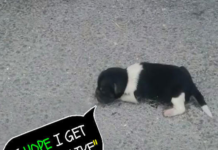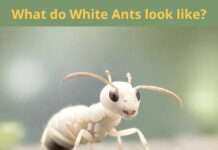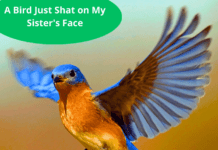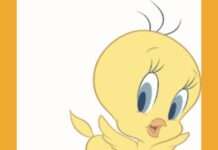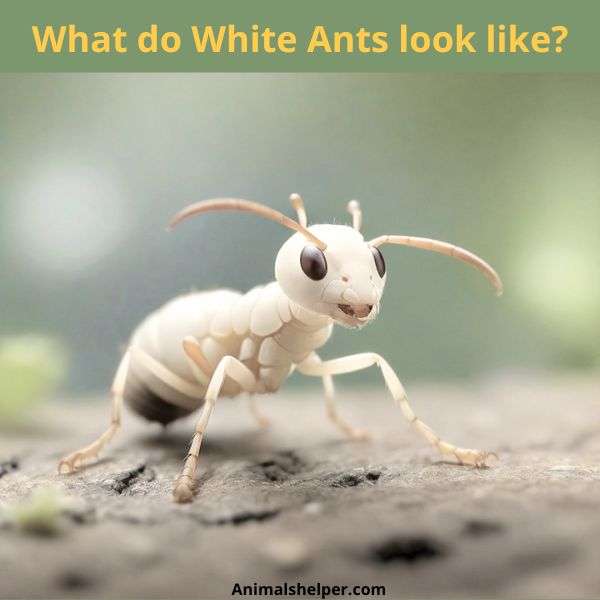
Outline
- Introduction to White Ants
- Physical Characteristics of White Ants
- Coloration
- Size and Shape
- Habitat and Behavior
- Nesting Habits
- Feeding Patterns
- Life Cycle of White Ants
- Egg Stage
- Larval Stage
- Pupal Stage
- Adult Stage
- Importance of Identifying White Ants
- Signs of White Ant Infestation
- Damage to Wood Structures
- Presence of Swarmers
- Hollow Sound in Wood
- Prevention and Control Measures
- Moisture Control
- Regular Inspections
- Treatment Options
- Natural Predators of White Ants
- Common Misconceptions about White Ants
- White Ants vs. Termites: Understanding the Difference
- White Ants in Different Cultures and Mythologies
- Environmental Impact of White Ants
- FAQs about White Ants
- Conclusion
What Do White Ants Look Like?
White ants, also known as termites, are fascinating creatures that belong to the order Isoptera. Despite their name, white ants are not ants at all; they are a type of social insect closely related to cockroaches. In this comprehensive guide, we’ll delve into the physical characteristics of white ants, their behavior, habitat, and essential information to identify and manage them effectively.
1. Introduction to White Ants
White ants play a crucial role in ecosystems by decomposing dead plant material, contributing to nutrient cycling. However, when they invade human habitats, they can cause significant damage to wooden structures and other cellulose-containing materials.
2. Physical Characteristics of White Ants
Coloration
White ants have pale, soft bodies that range from creamy white to pale brown. Their coloration is due to their thin exoskeleton, which lacks the pigmentation found in many other insects.
Size and Shape
White ants typically measure between 1/4 and 1/2 inch in length, depending on their caste. They have straight antennae, a broad waist, and two pairs of equal-sized wings. Unlike ants, white ants have a straight body without a distinct waist.
3. Habitat and Behavior
White ants are highly social insects that live in large colonies, typically underground or within wooden structures. They construct intricate tunnel systems to access food sources and maintain their nests.
Nesting Habits
White ants build their nests in moist environments near a constant food source. They can infest a variety of materials, including wood, soil, and even books.
Feeding Patterns
White ants feed on cellulose, which is found in plant fibers and wood. They play a vital role in breaking down dead trees and decaying plant matter in forests.
4. Life Cycle of White Ants
White ants undergo incomplete metamorphosis, consisting of egg, nymph, and adult stages.
Egg Stage
The queen white ant lays eggs, which hatch into tiny nymphs.
Larval Stage
The nymphs molt several times and eventually develop into adult workers, soldiers, or reproductives.
Pupal Stage
Some white ant species have a pupal stage where the immature white ants undergo further development before emerging as adults.
Adult Stage
Adult white ants are divided into different castes, including workers, soldiers, and reproductives. Each caste performs specific tasks within the colony.
5. Importance of Identifying White Ants
Identifying white ants is crucial for homeowners and property managers to prevent costly damage to structures.
6. Signs of White Ant Infestation
Damage to Wood Structures
White ants can cause significant damage to wooden structures, including flooring, walls, and furniture.
Presence of Swarmers
Swarmers, or winged reproductives, emerge from mature colonies to establish new colonies. Their presence indicates an active infestation.
Hollow Sound in Wood
Tapping on wood surfaces may produce a hollow sound if it’s infested with white ants, indicating internal damage.
7. Prevention and Control Measures
Moisture Control
Reducing moisture levels in and around the home can deter white ants from establishing colonies.
Regular Inspections
Routine inspections of wooden structures and foundations can help detect early signs of infestation.
Treatment Options
Professional pest control services offer various treatment options, including baiting systems, liquid termiticides, and fumigation.
8. Natural Predators of White Ants
Several predators, including ants, birds, and certain mammals, feed on white ants and help control their populations.
9. Common Misconceptions about White Ants
Despite their destructive reputation, not all white ants are harmful to humans, and some species are beneficial to the environment.
10. White Ants vs. Termites: Understanding the Difference
While white ants and termites are often used interchangeably, they belong to different insect orders and have distinct physical characteristics and behaviors.
11. White Ants in Different Cultures and Mythologies
White ants have cultural significance in various societies and are featured in folklore and myths around the world.
12. Environmental Impact of White Ants
White ants play a vital role in nutrient recycling and soil enrichment, contributing to ecosystem health.
13. FAQs about White Ants
- Do white ants bite humans?
- While white ants do not typically bite humans, they can cause significant structural damage to buildings and wooden structures.
- Can white ants fly?
- Yes, winged reproductives, known as swarmers, can fly to establish new colonies.
- How do I get rid of white ants naturally?
- Natural methods include using nematodes, diatomaceous earth, or orange oil. However, professional treatment may be necessary for severe infestations.
- Are white ants harmful to plants?
- White ants primarily feed on cellulose-containing materials like wood and do not pose a direct threat to plants.
- What should I do if I suspect a white ant infestation?
- Contact a licensed pest control professional to inspect your property and recommend appropriate treatment options.
14. Conclusion
In conclusion, white ants are fascinating insects with complex social structures and behaviors. While they play essential roles in natural ecosystems, they can pose significant challenges when they invade human habitats. Understanding their physical characteristics, behavior, and lifecycle is crucial for effective identification and management of infestations.
Read more : Canine Health: Common Questions About Dogs




